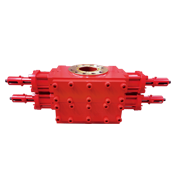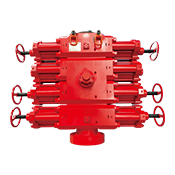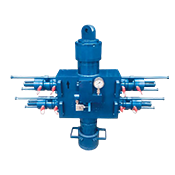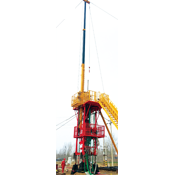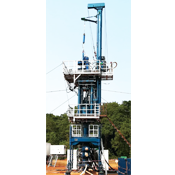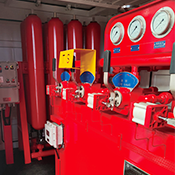Essential Features of Ram Blowout Preventers You Should Know for Enhanced Safety
2025-04-11
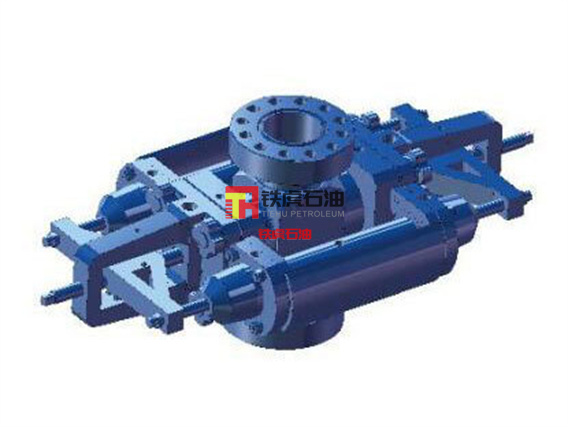
Essential Features of Ram Blowout Preventers You Should Know for Enhanced Safety
Table of Contents
1. Introduction to Ram Blowout Preventers
2. What are Blowout Preventers (BOPs)?
3. Key Features of Ram Blowout Preventers
3.1 Dual Ram Configuration
3.2 Reliable Sealing Mechanism
3.3 Enhanced Pressure Rating
3.4 Compact Design for Versatility
3.5 Advanced Control Systems
4. Types of Ram Blowout Preventers
4.1 Annular BOP
4.2 Pipe Ram BOP
4.3 Blind Ram BOP
5. Maintenance and Safety Protocols
5.1 Regular Inspections
5.2 Testing Procedures
5.3 Troubleshooting Common Issues
6. The Importance of Ram Blowout Preventers in the Oil and Gas Industry
7. FAQs about Ram Blowout Preventers
8. Conclusion: Ensuring Safety through Effective Use of Ram Blowout Preventers
1. Introduction to Ram Blowout Preventers
In the oil and gas industry, safety is paramount. One of the most critical components contributing to operational safety is the **Ram Blowout Preventer (BOP)**. These devices are designed to prevent blowouts, which can result in catastrophic consequences, including loss of life, environmental disasters, and extensive financial losses. This article delves into the essential features of Ram Blowout Preventers to enhance safety and ensure effective operation in demanding environments.
2. What are Blowout Preventers (BOPs)?
Blowout Preventers are safety devices used in the drilling process to control pressure from underground formations. When drilling into high-pressure reservoirs, the risk of a blowout—an uncontrolled release of crude oil or natural gas—exists. BOPs act as a barrier to prevent such occurrences, allowing drilling operations to continue safely while managing the pressures involved.
3. Key Features of Ram Blowout Preventers
Understanding the essential features of Ram Blowout Preventers is critical for ensuring their effectiveness. Below are some of the key characteristics that make Ram BOPs an indispensable part of drilling operations.
3.1 Dual Ram Configuration
One of the standout features of Ram Blowout Preventers is their dual ram configuration. This design allows for the simultaneous sealing of both pipe and annular spaces, providing a comprehensive barrier against blowouts. The dual ram setup enhances operational safety by allowing operators to manage various scenarios that may arise during drilling, ensuring the integrity of the wellbore.
3.2 Reliable Sealing Mechanism
A reliable sealing mechanism is crucial for the effective operation of Ram BOPs. These preventers utilize high-quality elastomeric seals that can withstand extreme pressures and temperatures. This ensures that once the BOP is engaged, it creates an airtight seal, preventing the escape of hydrocarbons. The reliability of the sealing mechanism is essential for minimizing the risk of blowouts and ensuring the safety of personnel and equipment.
3.3 Enhanced Pressure Rating
Modern Ram Blowout Preventers are designed with enhanced pressure ratings, allowing them to handle significant pressure variations encountered during drilling operations. Depending on the application and depth of drilling, the pressure ratings can vary, but advanced engineering has led to BOPs that can withstand pressures upwards of 15,000 psi. This capability ensures that they can effectively manage the demands of high-pressure drilling environments.
3.4 Compact Design for Versatility
The compact design of Ram Blowout Preventers allows for greater versatility in various drilling environments. Their space-saving architecture enables them to be deployed in tight spaces without compromising performance. This is particularly beneficial in offshore drilling operations where space is limited, allowing rigs to operate efficiently while maintaining robust safety protocols.
3.5 Advanced Control Systems
The integration of advanced control systems in Ram Blowout Preventers significantly enhances their functionality. These systems often feature remote control capabilities, allowing operators to engage or disengage the BOP from a safe distance. Additionally, real-time monitoring of pressure levels and system status can alert operators to potential issues, facilitating timely interventions to prevent blowouts.
4. Types of Ram Blowout Preventers
Different types of Ram Blowout Preventers are utilized based on specific drilling needs. Below are the primary types and their applications.
4.1 Annular BOP
Annular BOPs utilize a rubber sealing element to create a seal around the drill pipe, providing flexibility in sealing annular spaces. They are particularly effective in handling variations in pipe size and can be used to maintain well control when there is no pipe in the hole.
4.2 Pipe Ram BOP
Pipe Ram BOPs are designed to seal around the pipe itself, providing a tight grip to prevent any fluid or gas from escaping. This type is essential when drilling operations involve various pipe sizes and configurations, ensuring well integrity at all times.
4.3 Blind Ram BOP
Blind Ram BOPs are used to seal the wellbore when there is no pipe present. This type is crucial for emergencies where the well must be shut down immediately to prevent a blowout. Their ability to seal off the upper part of the well makes them an essential component of blowout prevention strategies.
5. Maintenance and Safety Protocols
To ensure the optimal performance of Ram Blowout Preventers, proper maintenance and safety protocols must be established. This includes regular inspections, testing procedures, and troubleshooting common issues.
5.1 Regular Inspections
Conducting regular inspections of Ram BOPs is vital for identifying potential wear and tear. Inspections should be thorough, assessing seals, hydraulic systems, and control mechanisms to ensure they are functioning correctly.
5.2 Testing Procedures
Implementing rigorous testing procedures is essential for verifying the functionality of Ram Blowout Preventers. This includes pressure testing and function testing to ensure that all components respond accurately in emergency situations. Testing should be conducted at regular intervals and after any significant repairs.
5.3 Troubleshooting Common Issues
Understanding how to troubleshoot common issues can prevent operational delays and enhance safety. Common problems may include hydraulic failures, seal degradation, and control system malfunctions. Establishing a troubleshooting guide can assist personnel in quickly resolving issues, maintaining effective operations.
6. The Importance of Ram Blowout Preventers in the Oil and Gas Industry
Ram Blowout Preventers play a crucial role in the oil and gas industry by safeguarding against blowouts, thus protecting lives, the environment, and valuable resources. Their effective operation ensures that drilling can proceed safely, reducing the likelihood of costly interruptions and legal liabilities. Moreover, with the increasing demands for energy and the exploration of deeper resources, the significance of reliable BOP systems cannot be overstated.
7. FAQs about Ram Blowout Preventers
What is the primary function of a Ram Blowout Preventer?
The primary function of a Ram Blowout Preventer is to seal the wellbore and prevent blowouts during drilling operations. This is achieved through a series of rubber seals and hydraulic systems that create an effective barrier.
How often should Ram Blowout Preventers be inspected?
Ram Blowout Preventers should be inspected regularly, typically before and after each drilling operation. Additionally, inspections should occur after any maintenance or significant weather events.
What are the main types of Blowout Preventers?
The main types of Blowout Preventers include Annular BOPs, Pipe Ram BOPs, and Blind Ram BOPs, each serving specific functions in blowout prevention.
How does a Ram BOP differ from other types of BOPs?
Ram BOPs employ a dual ram configuration that allows for effective sealing around both pipe and annular spaces, whereas other types may focus on specific sealing mechanisms depending on the application.
What maintenance is required for Ram Blowout Preventers?
Maintenance activities for Ram Blowout Preventers include regular inspections, hydraulic testing, seal replacements, and troubleshooting of any issues that arise during operations.
8. Conclusion: Ensuring Safety through Effective Use of Ram Blowout Preventers
In conclusion, Ram Blowout Preventers are indispensable tools in the drilling industry, designed to prevent catastrophic blowouts and ensure safe operations. By understanding their essential features, types, and maintenance requirements, operators can effectively mitigate risks and enhance safety protocols. Investing in quality Ram BOP technology and adhering to rigorous maintenance schedules not only protects personnel and the environment but also contributes to the overall success of drilling operations. As the industry continues to evolve, the role of Ram Blowout Preventers will remain vital in safeguarding our energy resources.
Related News
Contact Us
Mailbox:
tiehu@tiehupetro.com
Telephone:
86-317-2616808
Address:
Yanling Industrial Zone, Renqiu City, Cangzhou City, Hebei Province, China


